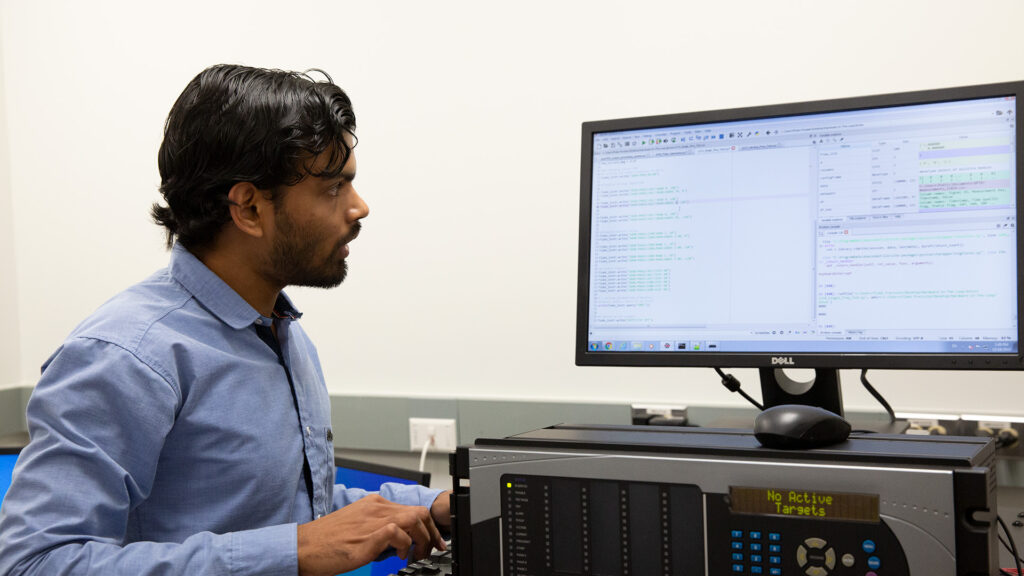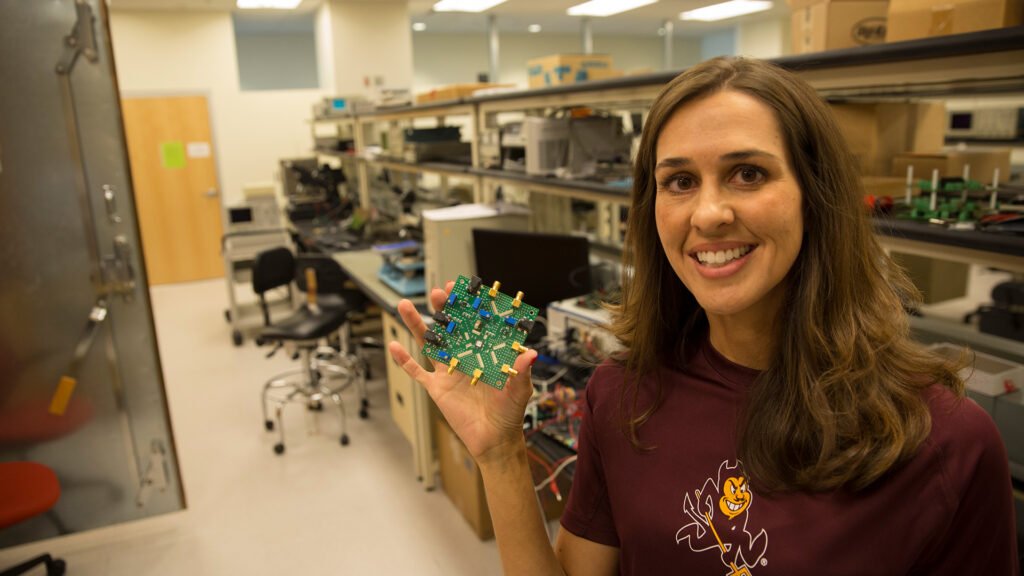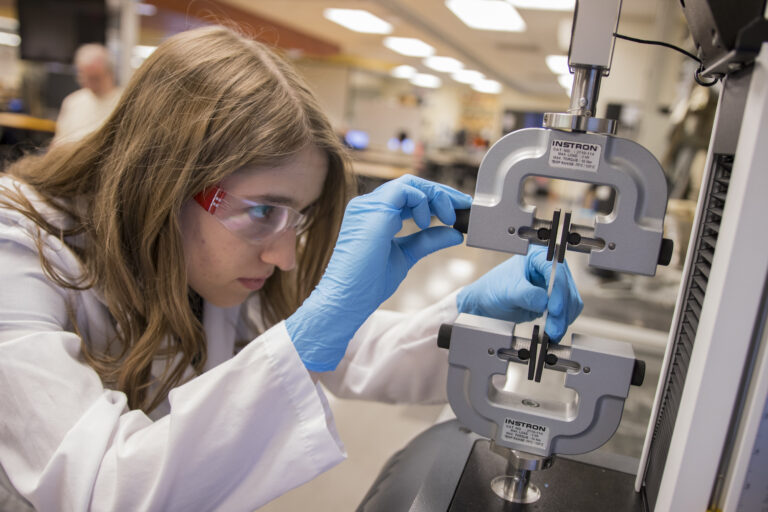
Research
Our research areas reflect the diversity of the electrical engineering profession and our faculty’s expertise, ranging from the smallest nanoelectronics to the U.S. power grid and its control.
Graduate students are involved in all of our research activities and have access to state-of-the-art facilities, such as the NanoFab microelectronics fabrication space on the Arizona State University Tempe campus and the MacroTechnology Works facility, a former semiconductor plant converted to lab space.
Research themes and faculty expertise
Control systems

Control systems are an important part of many emerging applications, such as autonomous vehicles and smart grid energy systems, to keep them functioning within defined parameters.
Meet the faculty who are performing control systems research and learn more about the field.
Electric power and energy systems

Electric power and energy systems include technology for generating and storing the electricity required for society to function and regulating its flow in any device that uses it.
Meet the faculty who are performing electric power and energy systems research and learn more about the field.
Electromagnetics, antennas and microwaves

Electromagnetics, antennas and microwaves are the radio frequency waves and their equipment essential for wireless devices to communicate with one another, the proper functioning of some biomedical and computing devices and more.
Meet the faculty who are performing electromagnetics, antennas and microwaves research and learn more about the field.
Electronic and mixed-signal circuit design

Electronic and mixed-signal circuit design is essential to create the microelectronics crucial to the modern world. This area encompasses the design of any devices using digital circuits or a combination of digital and analog circuits, such as cell phones, laptops, appliances and cars.
Meet the faculty who are performing electronic and mixed-signal circuit design research and learn more about the field.
- AI and machine learning
- Electric vehicles
- Electromagnetics and microwaves
- Electronic communications
- Electronic design automation
- Information theory
- Integrated circuits
- Media and engineering
- Nanoelectronics
- Power grid engineering and power electronics
- Quantum engineering
- Radiation effects
- Renewable energy, photovoltaics, photonics and optoelectronics
- Semiconductors
- Signal processing
Physical electronics and photonics

Physical electronics and photonics encompasses research and teaching in device physics for a variety of electronic applications. Uses include solar panels, quantum computing and more.
Meet the faculty who are performing physical electronics and photonics research and learn more about the field.
Signal processing and communications

Signal processing and communications technology takes in data collected via equipment such as sensors and antennas, such as code and radio frequency waves, and communicates it in a form usable by humans, such as spoken words or numerical values displayed by gauges.
Meet the faculty who are performing signal processing and communications research and learn more about the topic.
- AI and machine learning
- Electric vehicles
- Electromagnetics and microwaves
- Electronic communications
- Electronic design automation
- Information theory
- Integrated circuits
- Media and engineering
- Nanoelectronics
- Power grid engineering and power electronics
- Quantum engineering
- Radiation effects
- Renewable energy, photovoltaics, photonics and optoelectronics
- Semiconductors
- Signal processing
Research centers led by ECEE faculty
The following National Science Foundation funded research centers are led by School of Electrical, Computer and Energy Engineering faculty members.

Quantum Energy and Sustainable Solar Technologies*
QESST emphasizes research that provides improvement in the efficiency, economic viability and sustainability of photovoltaic systems.
NSF Engineering Research Center

Center for Efficient Vehicles and Sustainable Transportation Systems
EVSTS aims to yield transformational improvements in the energy efficiency and environmental sustainability of ground vehicles.
NSF Industry/University Cooperative Research Centers

Connection One
Connection One’s research focuses on developing technologies for cellular, environmental and defense applications.
NSF Industry/University Cooperative Research Centers

Power Systems Engineering Research Center
PSERC research at ASU addresses new energy sources as well as complex and diverse problems faced by the electric power industry.
NSF Industry/University Cooperative Research Centers

Sensor, Signal and Information Processing Center
SenSIP an ASU research center advances next-generation integrated multidisciplinary sensing applications in various fields.
NSF Industry/University Cooperative Research Centers
ASU research centers and institutes led by ECEE faculty
Check out the research our faculty members conduct through these centers and institutes.
*Center has successfully completed its goals.

Student research opportunities
At the Ira A. Fulton Schools of Engineering, undergraduate and graduate students have the opportunity to engage in year-round, meaningful research that addresses real-world challenges.
Working alongside faculty and accessing advanced facilities, students can explore various fields and develop skills that will prepare them for future careers or graduate studies.
This hands-on experience helps students gain practical knowledge while contributing to impactful engineering projects.